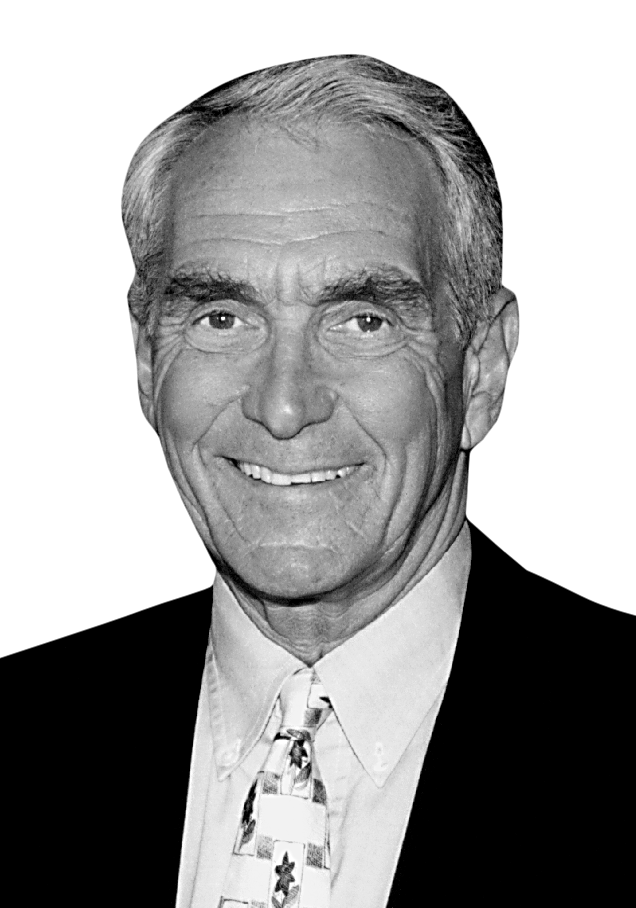By Joe Bast | January 23, 2023
Dr. Jay H. Lehr, one of the world’s most famous scientists and most fierce critic of the corruption of climate science, passed away on January 10, 2023. He was 86 years old.
Lehr was marked for success at an early age, graduating from Princeton University at the age of 20 with a degree in Geological Engineering. He went on to receive the nation’s first Ph.D. in Groundwater Hydrology from the University of Arizona and later became executive director of the National Association of Groundwater Scientists and Engineers.
Lehr first achieved national and international notice with the release in 1992 of Rational Readings on Environmental Concerns, a thick compendium of essays on a wide range of environmental issues written by many of the world’s leading scientists. The book’s recurring theme, that environmental risks are widely misunderstood and often exaggerated for political ends, would become Lehr’s lifelong message.
Rational Readings was one of a handful of books (others include Julian Simon’s The Ultimate Resource (1981), Simon and Herman Kahn’s The Resourceful Earth (1984), and Aaron Wildavsky’s But Is It True? (1997)) that exposed the growing corruption of science by progressives, including communists, who sought to frighten the public into embracing socialist policies. The book had a profound influence on the public debate at the time and an even greater long-term impact by letting many whistle-blowers in the science community know they were not alone.
Rational Readings was followed by many more books and more than 1,000 magazine and journal articles. Collecting and editing the work of others was one of Lehr’s superpowers. He edited McGraw-Hill’s Handbook on Environmental Science, Health and Technology (2000); Wiley’s Remediation Technologies Handbook (2004); the Environmental Instrumentation and Analysis Handbook (2005); the six-volume Water Encyclopedia (2005); and Wiley Interscience’s Nuclear Energy Encyclopedia: Science, Technology, and Applications (2011).
While his publications alone placed Lehr in the pantheon of the world’s leading public intellectuals, his second superpower was being an extraordinary public speaker. He spoke before thousands of audiences, large and small, in the U.S. and around the world. He invariably received standing ovations and was surrounded by fans and well-wishers immediately after stepping down from a podium.
Lehr’s popularity with audiences was so great that programs had to be delayed and audience members asked to follow him out of the room so the next speaker could have his turn.
One of Lehr’s passions was finding a way to condense the complex science of climate change into easily digested talking points that the average layperson could use when talking to family and friends. It was a difficult challenge given the interdisciplinary nature of climate science and the intense politicization of the climate debate. But he never stopped trying.
One result of his efforts was his “Ten Things You Need to Know about ‘Global Warming,” a list he had printed and placed on every chair in a room before he spoke.
What, exactly, made Jay Lehr one of the most influential scientists in the world? One thing was short-term photographic memory. He could write a speech, rehearse it a few times, and then deliver it flawlessly without notes. Another thing was a metabolism that allowed him to work 18 and even 20 hours a day. Long after everyone else was sound asleep, Lehr would be studying, writing, and rehearsing for tomorrow.
A third secret was Lehr’s physical fitness. He exercised, ran, biked, and swam for several hours every day. In 1990 he wrote a book about it (of course) titled Fit, Firm & 50. He thrilled crowds who lined the annual Princeton alumni parade route by walking the entire route on his hands, and when he could no longer manage that, rode a unicycle. He completed nine successive Hawaiian Ironman triathlons, winning his last full Ironman for his age group in 2007 in Panama Beach, Florida.
In 2016, at the age of 80, he was the reigning national champion in his age group in the Aqua Bike race, a 1.2 mile swim and 56 mile bike race. He still played baseball (catcher) and ice hockey (goalie) with teammates half his age or even younger. He was featured in Parachute Magazine in March 2010 for setting a new world record, having jumped from an airplane each and every month for 32 consecutive years.
But Lehr’s most important secret to success was an amazingly positive attitude that animated his speech, gestures, and expressions. Good things weren’t just nice or even excellent to Lehr, they were “fabulous!” Guests on his podcasts weren’t just good, they were “the best guests I have ever had on my show!” Lehr’s enthusiasm was highly contagious; people loved to be around him. He radiated positive energy.
Lehr’s sunny outlook on life came in part from a philosophy he shared with me a decade ago (or maybe it was two). He called it his “Ten Rules for Living the Good Life.” They included “Be kind in every human interaction,” “Do not ever complain,” and what became a favorite of ours, “Let no one rain on your parade.”
I printed and framed Lehr’s “Rules for Living” and it hung above my desk for many years. I probably read those words a hundred times while on the phone or pacing the room trying to solve a problem. I learned today that it is still hanging on a wall at The Heartland Institute, four years after my retirement.
Jay Lehr is still inspiring others to find wonder in the world, speak the truth, and live the good life.
Joseph Bast was founder and president of The Heartland Institute, where Jay Lehr was science director from 1993 to 2018. Bast retired in 2018.

Additional tributes to Jay Lehr can be found here:
Watts Up With That?
The Heartland Institute
Tom Harris | America Out Loud
